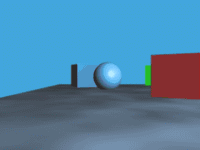Jay Gannon
Well-known member
I thin this discussion should end now as robert doesn't know the huge job that is involved and people will start getting wrong impressions from the thread wthout reading it properly. I think that anyone who posts this:
Should be taken with a pinch of salt to be honest.
I am not a WGOA member. I won't give you a script but I will give an outline to any reputable producer, whatever you want I can give it to you in 60 days or less. All I ask for once you receive it, all I ask for in payment upon delivery is this: http://www.bhphotovideo.com/c/product/597424-REG/Canon_3686B001_VIXIA_HV40_High_Definition.html
In the long term, all I want is 0.5% of whatever it makes and it is to be held until it reaches a certain amount.
I can do it call, comedy, romance, action, adventure, horror, and Sci-Fi.
All you need to do is to give me a genre and a logline to work with.
I'll update this add when I get a good offer.
Since this is reduser.net, you can also offer to give me a Redone as payment after turning in a finished script if you want that.
Should be taken with a pinch of salt to be honest.







